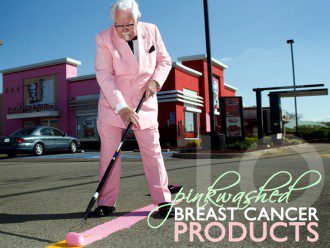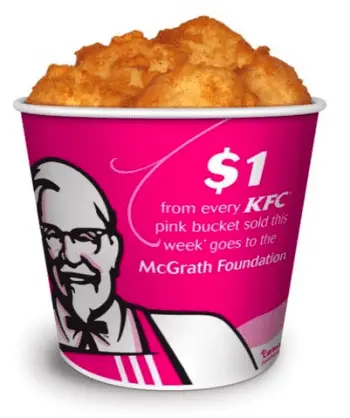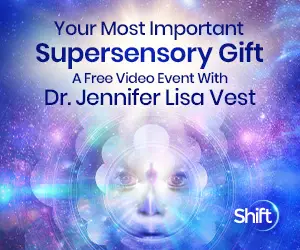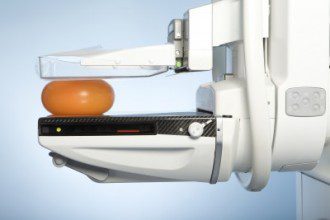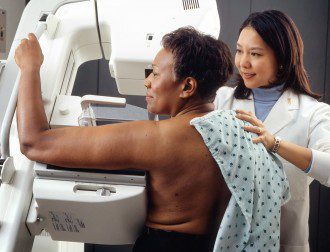By Sayer Ji
Contributing Writer for Wake Up World
The surprising origins of National Breast Cancer Awareness Month (NBCAM) is a matter of the public record: NBCAM was founded in 1985 as a partnership between the American Cancer Society and the pharmaceutical division of Imperial Chemical Industries (now part of AstraZeneca, the maker of several anti-breast cancer drugs). If you don’t believe me, visit the NBCAM website, www.nbcam.org, and try to contact them. It will be the AstraZeneca corporation that you will required to connect with.
AstraZeneca, manufacturer of the blockbuster breast cancer drugs Arimidex and Tamoxifen, was formed in 1999 through the merger of Astra AB and Zeneca Group, a pharmaceutical subsidiary of Imperial Chemical Industries. Imperial Chemical Industries, a multinational corporation responsible for producing carcinogenic petrochemical derivatives such as vinyl chloride and pesticides, founded National Breast Cancer Awareness Month in 1985, in partnership with the American Cancer Society, in order to promote the widespread adoption of x-ray mammography, the dangers and failings of which we have documented elsewhere.
The aim of the NBCAM from the start has been only to promote mammography as the most effective weapon in the fight against breast cancer — despite the fact that science has proven that mammogram radiation is actually accelerating the cancer epidemic. As a result, sadly, Breast Cancer Awareness Month is a time of increasing awareness not of the preventable causes of breast cancer, but of the breast cancer industry’s insatiable need to both raise money for research into a pharmaceutical “cure”, and to promote its primary means of so called “prevention”: early detection via x-ray mammography.
Let’s Examine the Facts…
On first account, a pharmaceutical “cure” is unlikely as it is an oxymoron. Drugs do not cure disease anymore than bullets cure war. Beneath modern medicine’s showy display of diagnostic contraptions, heroic “life-saving” procedures, and an armory of exotic drugs of strange origin and power, it is always the body’s ability to heal itself – beneath the pomp and circumstance – that is truly responsible for medicine’s apparent successes. Too often, in spite of what medicine does to “treat” or “save” the body, it is the body which silently treats and saves itself, against invasive chemical and surgical medical interventions.
If it were not for the body’s truly miraculous self-healing abilities, and the ceaseless self-correction process that occurs each and every moment within each and every cell, our bodies would perish within a matter of minutes. The mystery is not in how our body succumbs to cancer; rather the mystery is in how, after years and even decades of chemical exposure and nutrient deprivation our bodies prevail against cancer for so long.
The primary causes of breast cancer — nutritional deficiencies, exposure to environmental toxicity, inflammation, estrogen dominance and the resultant breakdown in genetic integrity and immune surveillance — are entirely overlooked by this fixation on drug therapy and its would-be “magic bullets.”
Billions of dollars are raised and funneled towards drug research, when the lowly turmeric plant, the humble cabbage and the unassuming bowl of miso soup may offer far more promise in the prevention and treatment of breast cancer than all the toximolecular drugs on the market put together. (To view several dozen substances, visit GreenMedInfo’s Breast Cancer research page.)
When it comes to the breast cancer industry’s emphasis on equating “prevention” with “early detection” through x-ray mammography, nowhere is the inherently pathological ideology of allopathic medicine more clearly evident. Not only is the ionizing radiation used to discern pathological lesions in breast tissue one of the very risk factors for the development of breast cancer, but the identification of the word “prevention” with “early detection,” is a disingenuous way of saying that all we can do to prevent breast cancer is to detect its inevitable presence sooner than would be possible without this technology.
If women succumb to the idea of prevention as doing nothing but waiting for the detection of the disease, many will find a similarly deranged logic reemerge later when the self-fulfilling prophecy of prevention-through-doing-nothing is fulfilled and “treatment” is now required. “Treatment,” when not strictly surgical, involves the use of very powerful chemicals and high doses of ionizing radiation which “poison” the cancer cells.
The obvious problem with this approach is that the application of either form of death energy is not suitably selective, and in the long run, many women die sooner from the side effects of toximolecular “therapy” than from the cancer itself. Why is the obvious question never asked: If exposure to the genotoxic and immune system disabling effects of chemicals and radiation is causative in breast cancer, then why is blasting the body with more poisonous chemicals and radiation considered sound treatment?
The answer to this question has much more to do with ignorance than it does an intentional desire to do harm. But the results are the same: unnecessary pain, suffering and death.
Faced with a situation where medieval notions of prevention and treatment of breast cancer are the norm, it is no wonder that when polled over 40% of women believe they will contract breast cancer sometime in their life – well over three times their actual risk. After all, have any of them been given a sense that there is something they can do to actually prevent their disease other than “watchful waiting”?
Obfuscating the real preventative measures available to women to combat breast cancer, and all cancers for that matter, trusted “authoritative” sources like the Susan G. Komen Foundation publish irresponsible statements like this:
“It is unclear what the exact relationship is between eating fruits and vegetables and breast cancer risk…little, if any link was found between the two in a pooled analysis that combined data from eight large studies.”
Have we really come to the point where the commonsense consumption of fruits and vegetables in the prevention of disease can so matter-of-factly be called into question? Do we really need randomized, double-blind and placebo controlled clinical trials to prove beyond a shadow of a doubt that our bodies can benefit from the phytonutrients and antioxidants in fruits and vegetables in the prevention of cancer?
Another atrocious example of this conspiracy against identifying the obvious causes and cures for diseases like breast cancer is the National Breast Cancer Foundation’s website. Go to the bottom of their homepage and type in “carcinogen” in their site wide search box. This is what will appear on the results page:
Your search – carcinogen – did not match any documents. No pages were found containing “carcinogen“.
On Susan G. Komen’s website the term only emerges twice, and both in the context of denying the likliehood of there being a connection between smoking and breast cancer.
If you can remove the reality of carcinogenicity by erasing from the mind’s of would-be cancer sufferers the word carcinogen, and thereby conceal the link between environmental and dietary exposures of a multitude of toxins, then the obvious “cure” these massive organizations are vacuuming in billions of dollars of donations every year to find, namely, the removal of carcinogens and detoxification of the system, will never be discovered.
Examples like these make it increasingly apparent that orthodox medicine, and the world view it represents, is approaching a theoretical end-time perhaps most accurately described as Pharmageddon. Within the horizon of this perspective vitamins are considered toxic, fruits and vegetables simply a source of caloric content (a poor one, at that), and cancer-causing drugs are understood as the only legitimate and for that matter, legal, way to combat cancer. Are we really at the tipping point, or is there still hope?
Fortunately there are thousands of scientific studies extant today on the therapeutic value of foods, herbs and spices in breast health, many of which can be found on the government’s own biomedical database known as MEDLINE. Decades of research have confirmed the veracity of the Hippocratic phrase: “Let food be thy medicine,” and until a prescription is required to obtain and consume organic food, we can still draw from a vast cornucopia of natural substances whose safety and efficacy that the conventional pharmacopeia to shame.
Mammograms Linked To An Epidemic of Misdiagnosed Cancers
Although early detection through x-ray mammography has been the clarion call of Breast Cancer Awareness campaigns for a quarter of a century now, very little progress has been made in making the public aware about the crucial differences between non-malignant lesions/tumors and invasive or non-invasive cancers detected through this technology. When all forms of breast pathology are looked at in the aggregate, irrespective of their relative risk for harm, disease of the breast takes on the appearance of a monolithic entity that you either have, or don’t have; they call it breast cancer.
The concept of a breast cancer that has no symptoms, which can not be diagnosed through manual examination of the breast and which does not become invasive in the vast majority of cases, might sound unbelievable to most women. However, there does exist a rather mysterious clinical anomaly known as Ductal Carcinoma In Situ (DCIS) which is, in fact, one of the most commonly diagnosed and unnecessarily treated forms of “breast cancer” today.
What women fail to understand — because their physicians do not know better or have not taken care to explain to them — is that they have a choice when diagnosed with DCIS. Rather than succumb to aggressive treatment with surgery, radiation and chemo-drugs, women can choose watchful waiting. Better yet, a radical lifestyle change can be embraced focused on eliminating exposure to chemicals and radiation, as well as improved exercise and nutrition. Unfortunately this choice is not being made in most cases because the medical community is not informing their patients that there is one.
This remained of this article aims to fill the information gap relating to DCIS, in order to educate and empower women who, by accident or design, have been or are at threat of being misdiagnosed and consequently mistreated (in more ways than one) by the medical establishment.
Ductal Carcinoma In Situ: Breast Cancer or Benign Lesion?
Between 30-50% of new breast cancer diagnoses obtained through x-ray mammography screenings are classified as Ductal Carcinoma In Situ (DCIS). DCIS refers to the abnormal growth of cells within the milk ducts of the breast forming a lesion commonly between 1-1.5 cm in diameter, and is considered non-invasive or “stage zero breast cancer,” with some experts arguing for its complete re-classification as a non-cancerous condition.
Because DCIS is almost invariably asymptomatic and has no palpable lesions, it would not be known as a clinically relevant entity were it not for the use of x-ray diagnostic technology. Indeed, it was not until the development and widespread application of mammography in the early 1980s as the central push behind National Breast Cancer Awareness campaigns that rates of DCIS diagnosis began to expand to their present day epidemic proportions.1 It is no wonder, therefore, that the United States, which has one of the highest x-ray mammography rates, also has the highest level of DCIS in the world. As of January 2005, an estimated one-half million U.S. women were living with a diagnosis of DCIS.2
Proponents of breast screenings claim they are “saving lives” through the “early detection” and treatment of DCIS, regarding it as a potentially life-threatening condition, indistinct from actually invasive cancers. They view DCIS a priori as “pre-cancerous” and argue that, because it couldcause harm if left untreated it should be treated in the same aggressive manner as invasive cancer. The problem with this approach is that while the rate at which DCIS progresses to invasive cancer is still largely unknown, the weight of evidence indicates that it is significantly less than 50% – perhaps as low as 2-4%. Indeed, the 10-year survival rates of patients with DCIS (96%-98%) post-treatment speaks volumes to the relatively benign nature of the condition.3,8 Another study found that at the 40 year follow-up period 40% of DCIS lesions still had no signs of invasiveness.4 Adding even more uncertainty, another study showed that coexisting ductal carcinoma in situ independently predicts lower tumor aggressiveness in node-positive luminal breast cancer, indicating its possibly protective role. 5
Is Watchful Waiting the More Intelligent Approach?
A solid argument can be made that watchful waiting is the most appropriate response to the diagnosis of DCIS, and that in many cases DCIS would be better left overdiagnosed and under-treated. As one paper discusses:
“The central harm of screening is overdiagnosis — the detection of abnormalities that meet the pathologic definition of cancer but will never progress to cause symptoms.” [Source]
A solid body of evidence has emerged suggesting that when DCIS is left undiagnosed and untreated rarely will it become malignant. DCIS was in fact poorly named from the outset, as it is does not behave like most carcinomas (cancers). Cancer, like the constellation named after it, derives from the Greek word for CRAB, indicating the manner in which is expands outward in uncontrolled growth. In situ means exactly the opposite, “in place.” An unmoving cancer is therefore a contradiction in terms. These problems with classification have not gone unnoticed in the medical journals:
“Despite the presence of the word “carcinoma,” ductal carcinoma in situ (DCIS) is the poster child for this problem (a senior pathologist involved in developing classification systems confided to one of us that he regretted the use of the term carcinoma in DCIS). No one believes that DCIS always progresses to invasive cancer, and no one believes it never does. Although no one is sure what the probability of progression is, studies of DCIS that were missed at biopsy (1,2) and the autopsy reservoir (3) suggest that the lifetime risk of progression must be considerably less than 50%.” [Source]
The true irony here is that while participation in x-ray mammography is considered by the public a form of breast cancer prevention and “watchful waiting,” it has become – whether by design or accident – a very effective way of manufacturing false breast cancer diagnoses and justifying unnecessary treatment. This is not unlike what has been seen with prostate cancer screenings that track Prostate Specific Antigen (PSA); the aggressive treatment of lesions/tumors identified through PSA markers may actually increase patient mortality relative to doing nothing at all.
Women diagnosed with DCIS are simply not given the option to decline treatment. The problem is illustrated below:
“Because the “best guess” is that most DCIS won’t progress to invasive cancer, the risk of overdiagnosis would be expected to be greater than 50%. The problem with overdiagnosis is that it leads to overtreatment. Because it is impossible to determine which individuals are overdiagnosed, almost everyone gets treated as if they had invasive cancer.” [Source]
Overdiagnosis is a huge problem, discussed in greater depth here:
“Overdiagnosis plays havoc with our understanding of cancer statistics. Because overdiagnosis effectively changes a healthy person into a diseased one, it causes overestimations of the sensitivity, specificity, and positive predictive value of screening tests and the incidence of disease(13). As the MLP and a recent analysis of Surveillance, Epidemiology, and End Results (SEER)1data illustrate (14), overdiagnosis also markedly increases the length of survival, regardless of whether screening or associated treatments are actually effective. However, overdiagnosis does not reduce disease-specific mortality because treating subjects with pseudodisease does not help those who have real disease. Consequently, disease-specific mortality is the most valid end point for the evaluation of screening effectiveness.” [Source]
Ultimately DCIS overdiagnoses contribute to the appearance that conventional breast cancer screenings and treatments are more successful and less harmful than they actually are, while at the same time making the industry far more profitable than otherwise would be the case.
(Mis)Treatment of DCIS
For most of the twentieth century mastectomy was the first line treatment for Ductal Carcinoma In Situ (DCIS), with younger patients more likely to undergo the procedure. Even after lumpectomy and radiotherapy were shown to be at least as effective for invasive cancer, still in 2002, 26% of DCIS patients were still receiving mastectomy.6
The most common scenario today following diagnosis of DCIS is for the oncologist to recommend lumpectomy, followed by radiation and hormone suppressive therapies such as Arimidex and Tamoxifen. The tragedy here is that women are not being made to understand the nature of DCIS or the concept of “non-progressive” breast cancers. There is still the black and white perception out there that you either have cancer, or do not have cancer. In a poll on DCIS awareness published in 2000, 94% of women studied doubted the possibility of non-progressive breast cancers.7 In other words, these women had no understanding of the nature of DCIS. And why should they? Major authorities frame DCIS as “pre-cancerous,” implying its inevitable transformation into cancer. When the standard of care for DCIS is to suggest the same types of treatment used to treat invasive cancer, very few women are provided with the information needed to make an informed decision.
Additional Reading
In support of cultivating an authentic awareness of the preventable causes and accessible natural solutions for breast cancer, GreenMedInfo has released a downloadable document (pdf) on this subject for free and unlimited public access. It contains 543 articles on 229 relevant substances, and links directly to the National Library of Medicine’s bibliographic database known as Medline.
Download this free document HERE.
Related Articles and Resources:
GreenMedInfo:
- GMI Health Guide: Breast Cancer
- Natural Anti-Breast Cancer Agents
- Natural Aromatase Inhibitors
- Natural Anti-Breast Cancer Substances
- High bone density is associated with profoundly elevated rates of breast cancer risk (330% increase)
- Why Mammography is NOT an Effective Breast Cancer Screen
Wake Up World:
- How X-Ray Mammography Is Accelerating The Epidemic of Cancer
- Study: Many Breast Tumors Will Spontaneously Regress
- Hidden Dangers of Mammograms Every Woman Should Know About
- Confirmed: The More Mammograms You Get, The More Harm They Do
- Cancer Screening Doesn’t Save Lives, Meta-Study Reveals
- Sunlight Holds Key To Killing Breast Cancer
- Study: 80% of Early-Stage Breast Cancers DO NOT Progress to More Concerning Forms
- FAIL: Another Mammography Study Finds They Don’t Save Lives
- Dressed To Kill: The Link Between Breast Cancer and Bras
- Millions Wrongly Treated for ‘Cancer,’ National Cancer Institute Panel Confirms
- 30 Years of Breast Screening: 1.3 Million Wrongly Treated
- A Pink Wolf In Sheep’s Clothing – Strange Bedfellows “Curing” Cancer
References:
- 1,2 NIH State-of-the-Science Conference. Diagnosis and Management of Ductal Carcinoma in Situ (DCIS), Sept. 2009 Source: http://consensus.nih.gov/2009/dcisstatement.htm
- 3 Ductal carcinoma in situ (DCIS): are we overdetecting it? http://breast-cancer-research.com/content/6/S1/P23
- 4 Coexisting ductal carcinoma in situ independently predicts lower tumor aggressiveness in node-positive luminal breast cancer. Med Oncol. 2011 Oct 8. Epub 2011 Oct 8. PMID: 21983862
- 5, 6 Overdiagnosis and overtreatment of breast cancer: Rates of ductal carcinoma in situ: a US perspective
- 7 US women’s attitudes to false positive mammography results and detection of ductal carcinoma in situ: cross sectional survey. BMJ 320 : 1635 doi: 10.1136/bmj.320.7250.1635 (Published 17 June 2000)
- 8 Mortality among women with ductal carcinoma in situ of the breast in the population-based surveillance, epidemiology and end results program. Arch Intern Med. 2000 Apr 10;160(7):953-8.
Recommended articles by Sayer Ji:
- The Powerful Aspirin Alternative Your Doctor Never Told You About
- 13 Evidence-Based Medicinal Properties of Coconut Oil
- Group Drumming Better Than Prozac, Study Suggests
- 25 Cancer Stem-Cell Killing Foods That Are Smarter Than Chemo and Radiation
- How Pomegranate Puts Chemo and Radiation to Shame
- How Turmeric Can Save the Aging Brain From Dementia and Premature Death
- Dramatic Recovery in Parkinson’s Patient with Gluten Free Diet
- 6 Bodily Tissues That Can Be Regenerated Through Nutrition
- Fluoride Literally Turns the Pineal Gland to Stone, Research Suggests
- Why All Diabetics Should Know About Turmeric
- Wheat Contains Not One But 23K Potentially Harmful Proteins
About the author:
Sayer Ji is the founder of Greenmedinfo.com, a reviewer at the International Journal of Human Nutrition and Functional Medicine, Co-founder and CEO of Systome Biomed, Vice Chairman of the Board of the National Health Federation, and Steering Committee Member of the Global Non-GMO Foundation.
For more, visit GreenMedInfo.com and Facebook.com/GreenMedInfo, or sign up for GreenMedInfo’s free e-Newsletter.
© October 1st, 2012 GreenMedInfo LLC. This work is reproduced and distributed with the permission of GreenMedInfo LLC. Want to learn more from GreenMedInfo? Sign up for their newsletter here.

If you've ever found value in our articles, we'd greatly appreciate your support by purchasing Mindful Meditation Techniques for Kids - A Practical Guide for Adults to Empower Kids with the Gift of Inner Peace and Resilience for Life.
In the spirit of mindfulness, we encourage you to choose the paperback version. Delve into its pages away from screen glare and notifications, allowing yourself to fully immerse in the transformative practices within. The physical book enriches the learning process and serves as a tangible commitment to mindfulness, easily shared among family and friends.
Over the past few years, Wake Up World has faced significant online censorship, impacting our financial ability to stay online. Instead of soliciting donations, we're exploring win-win solutions with our readers to remain financially viable. Moving into book publishing, we hope to secure ongoing funds to continue our mission. With over 8,500 articles published in the past 13 years, we are committed to keeping our content free and accessible to everyone, without resorting to a paywall.

